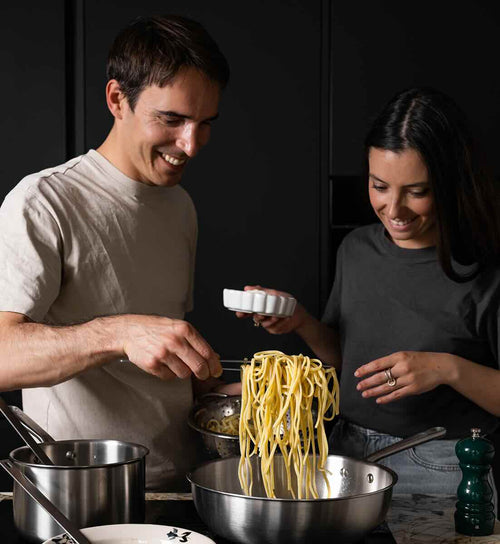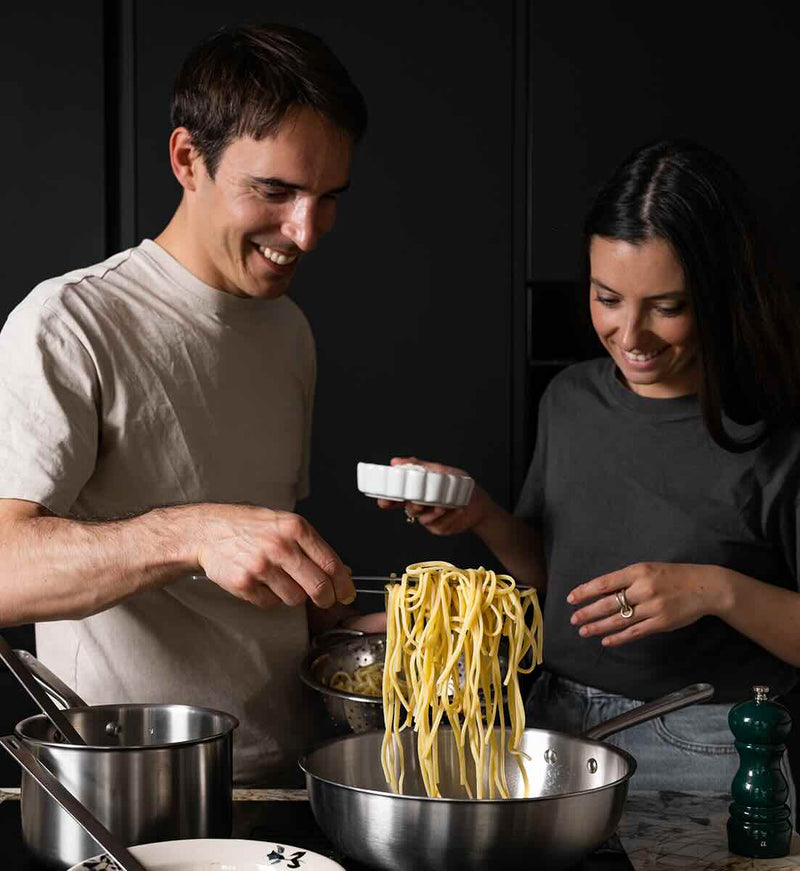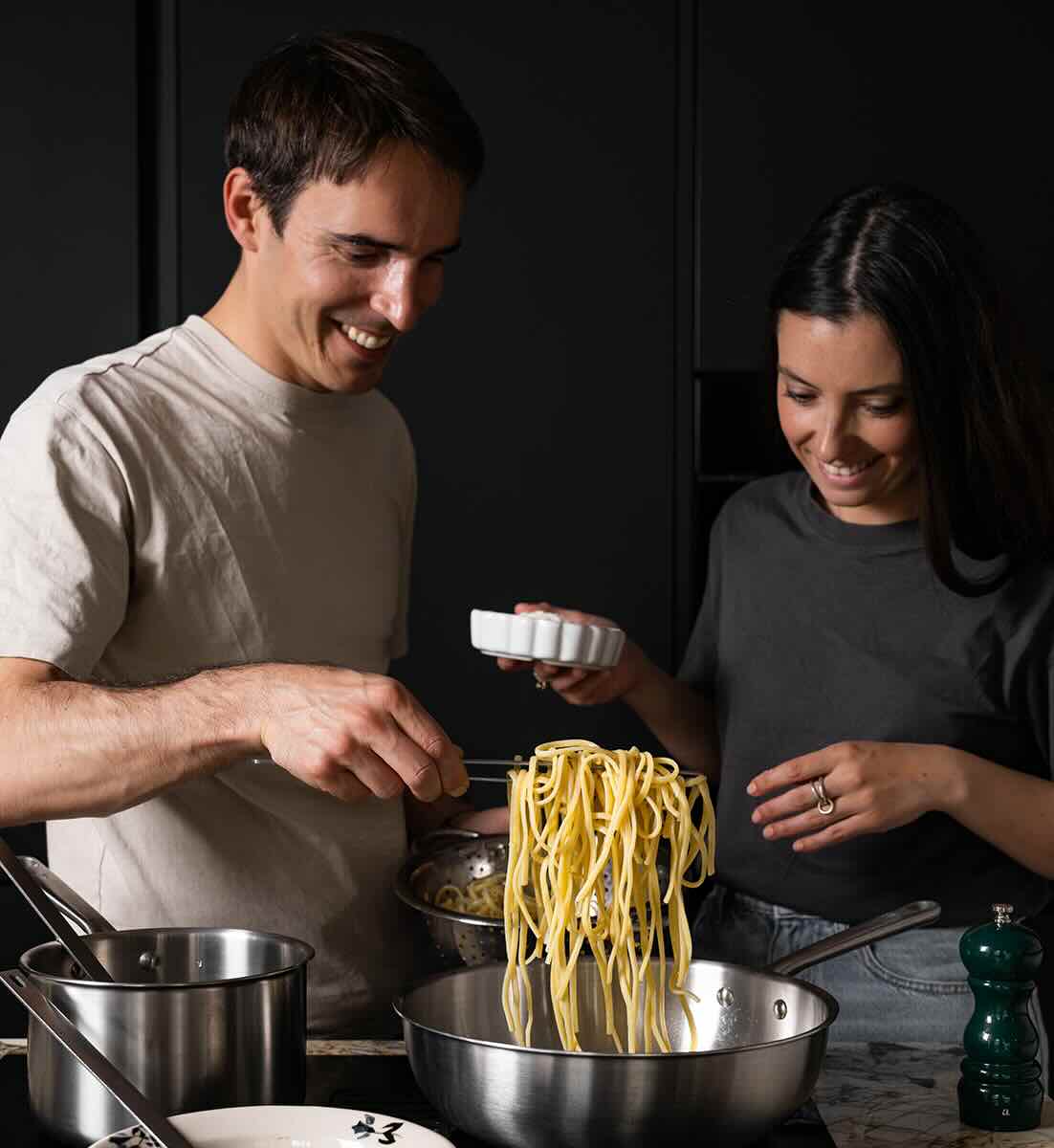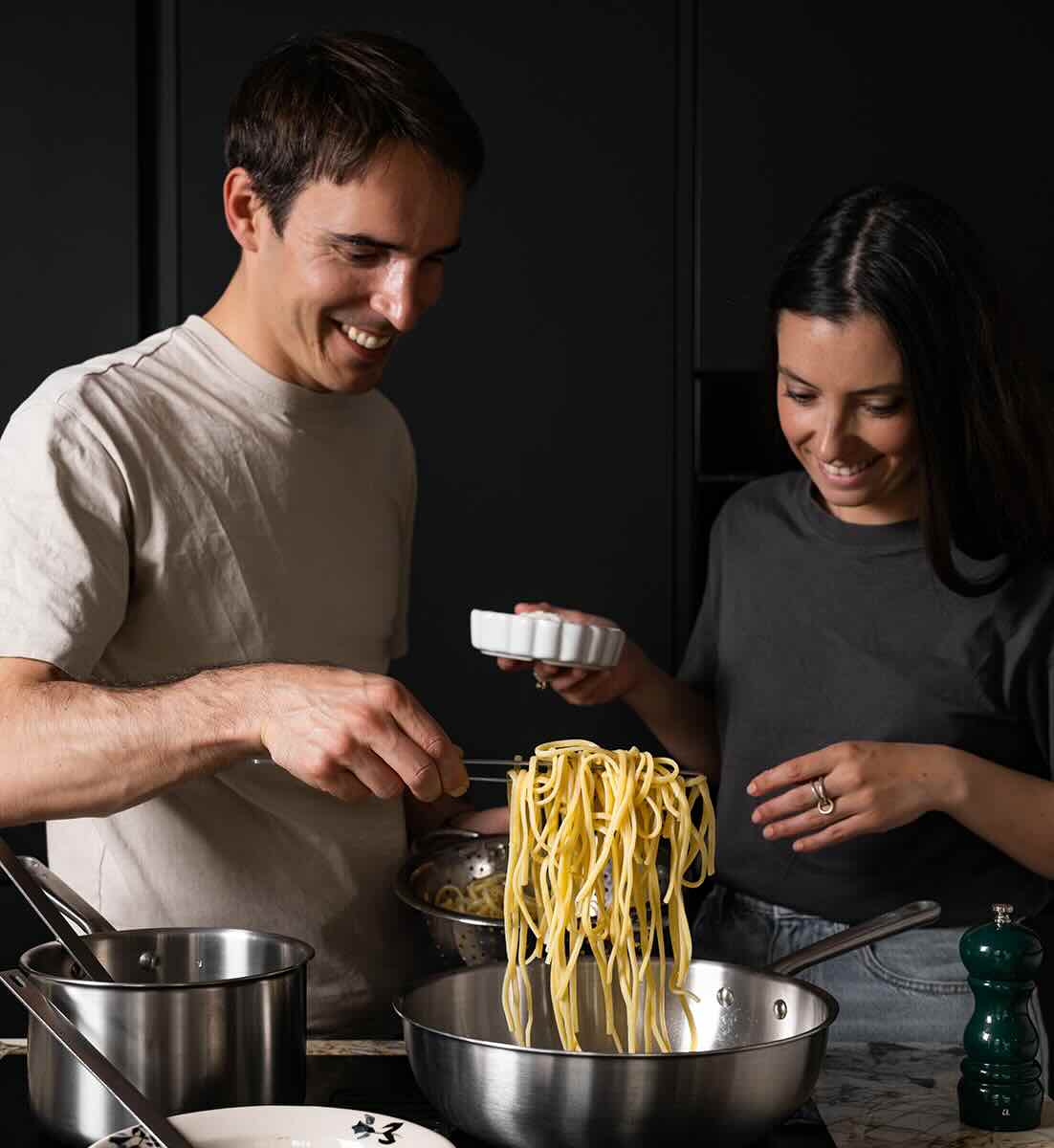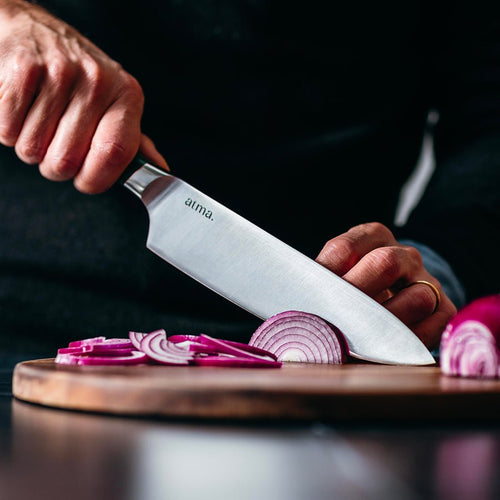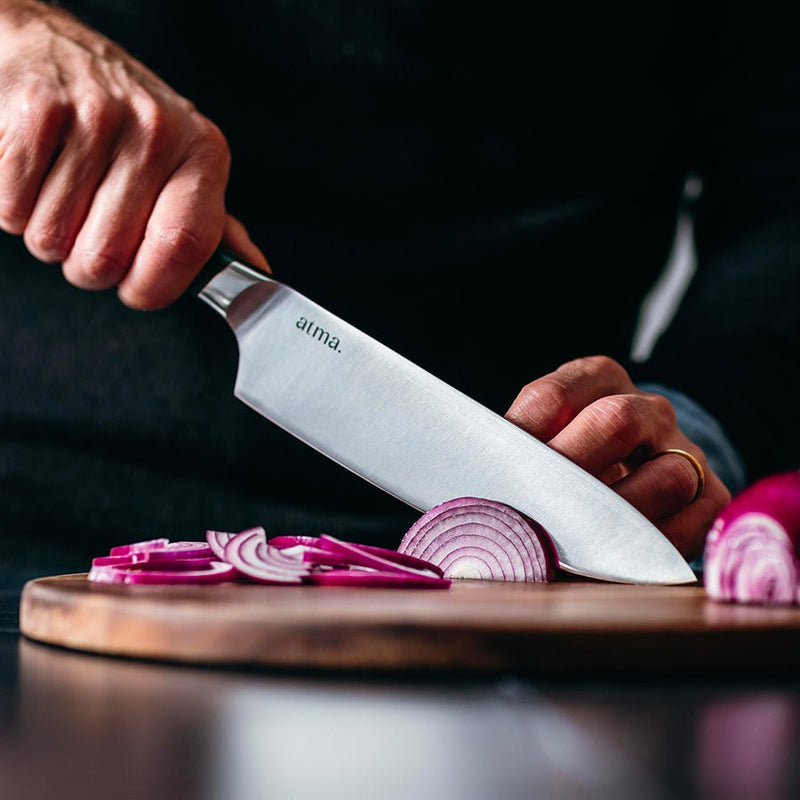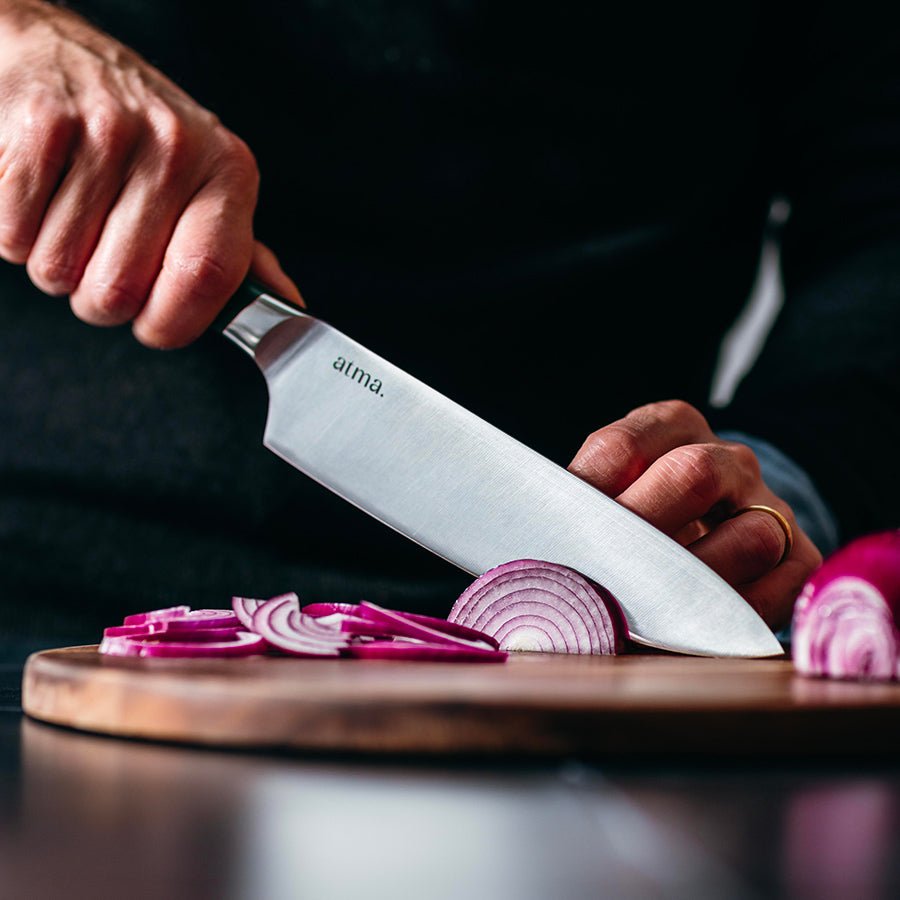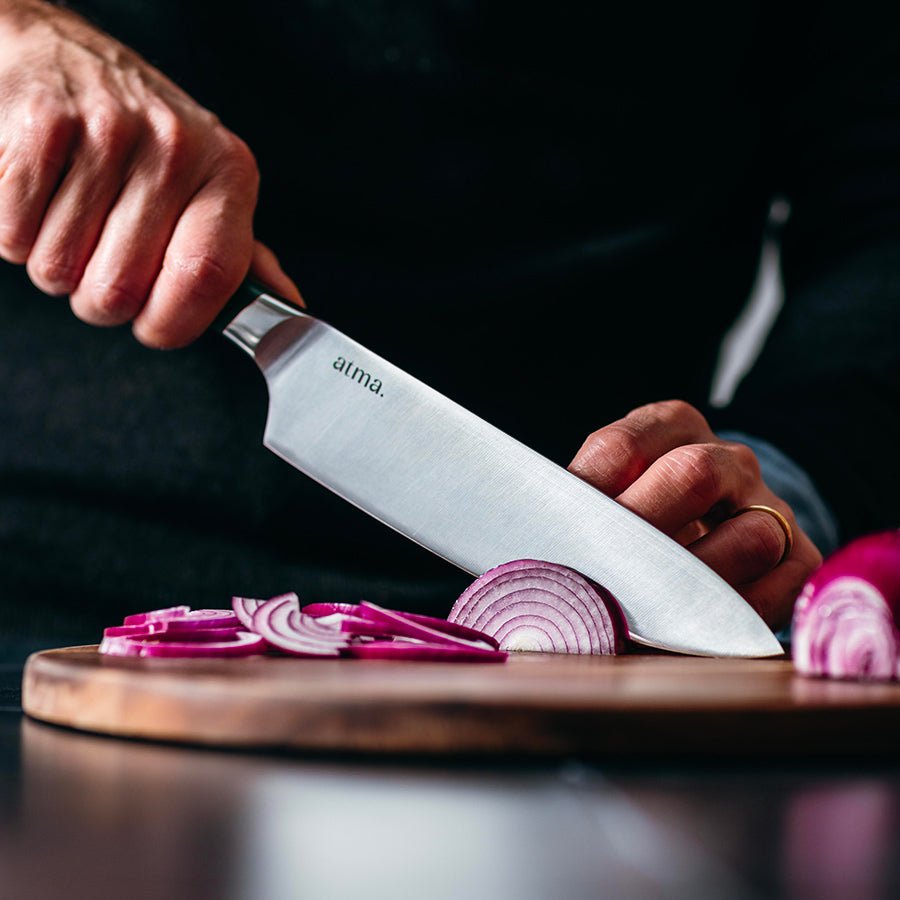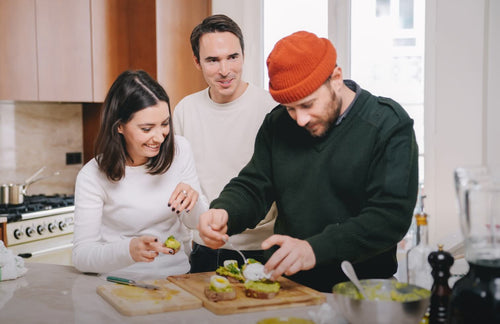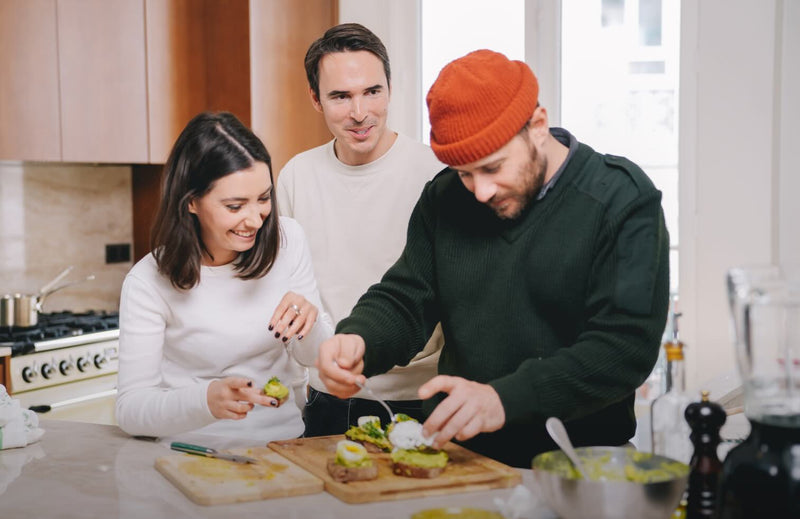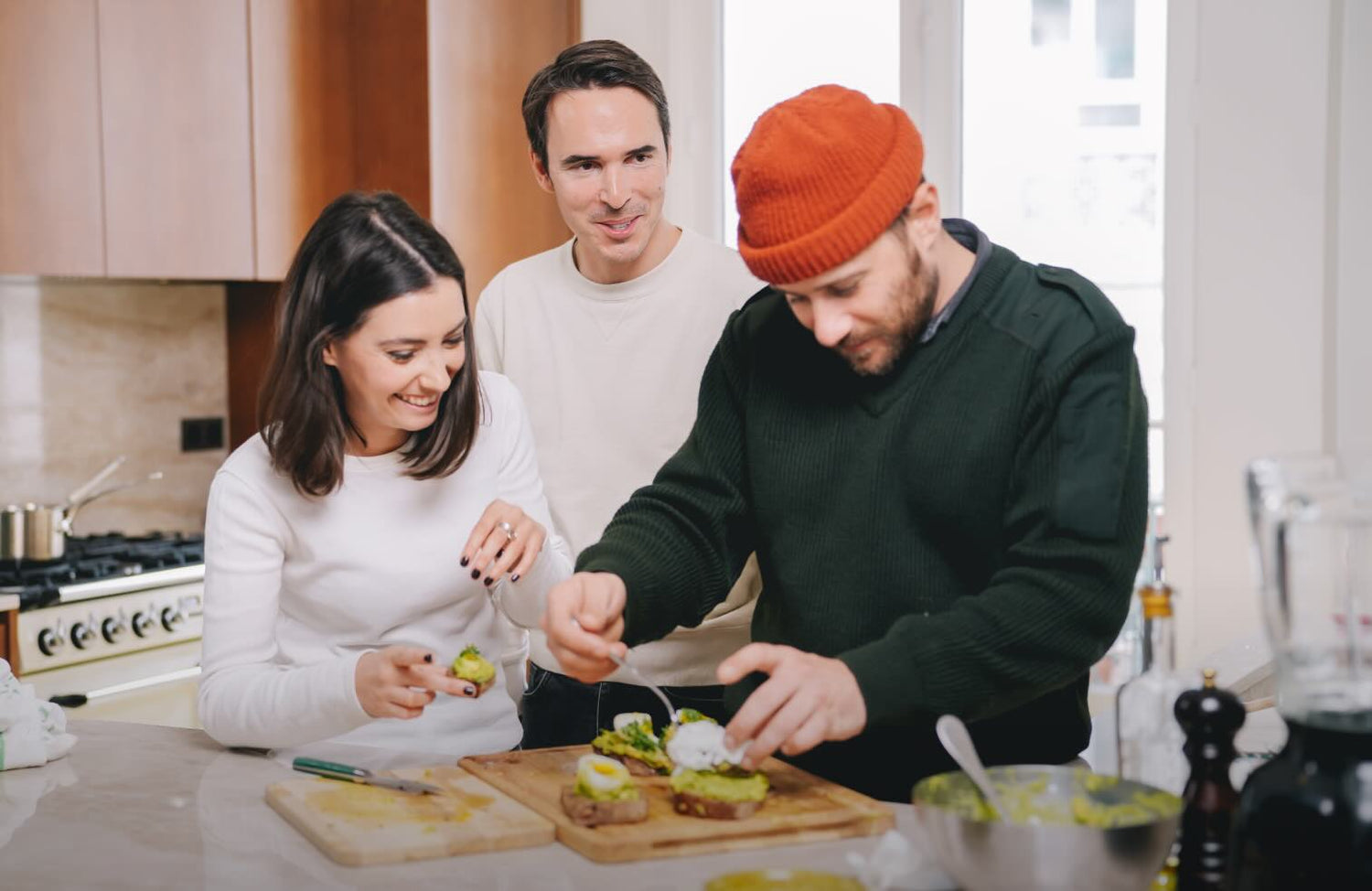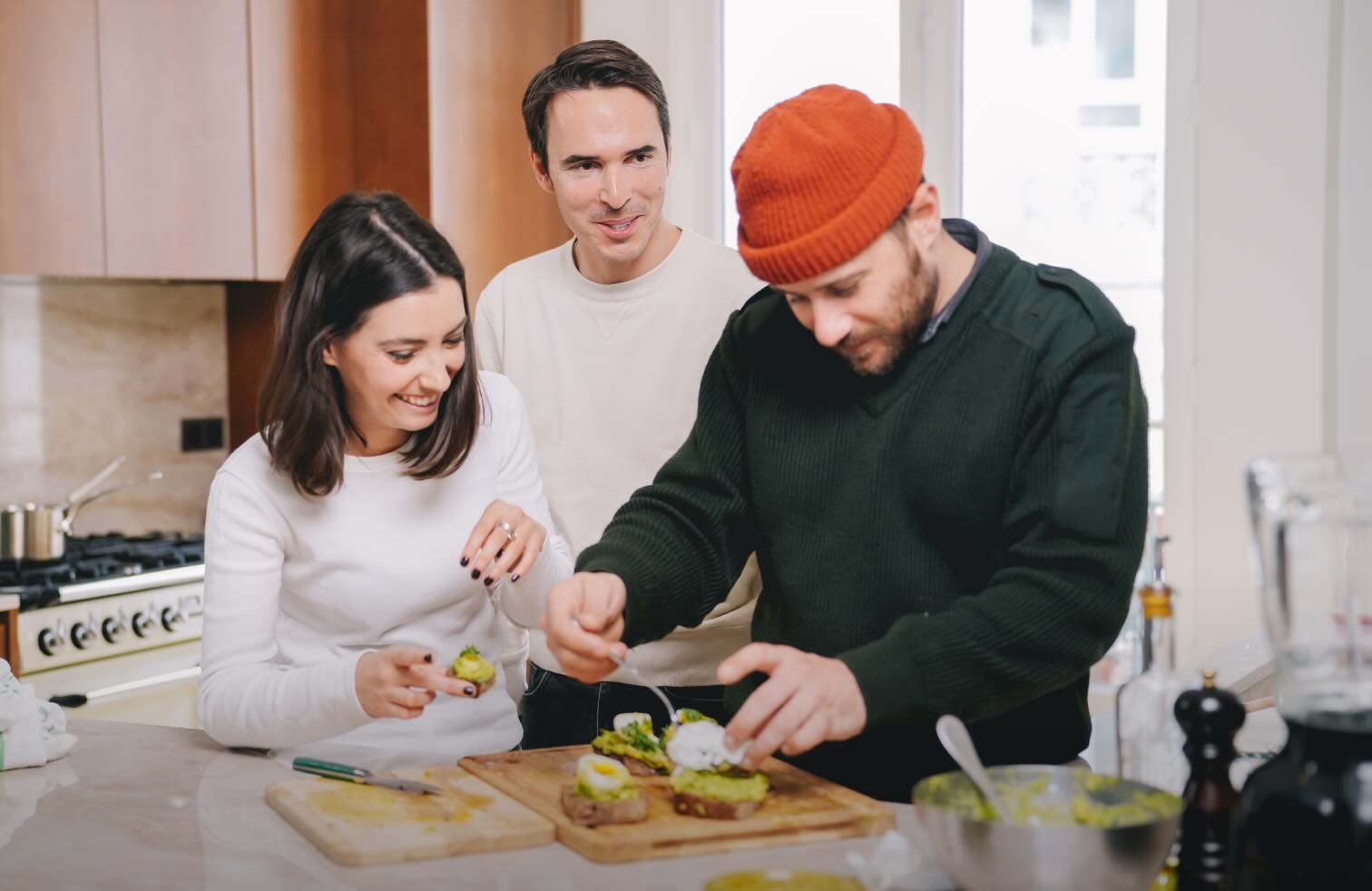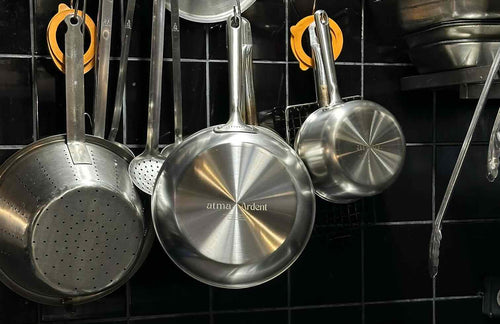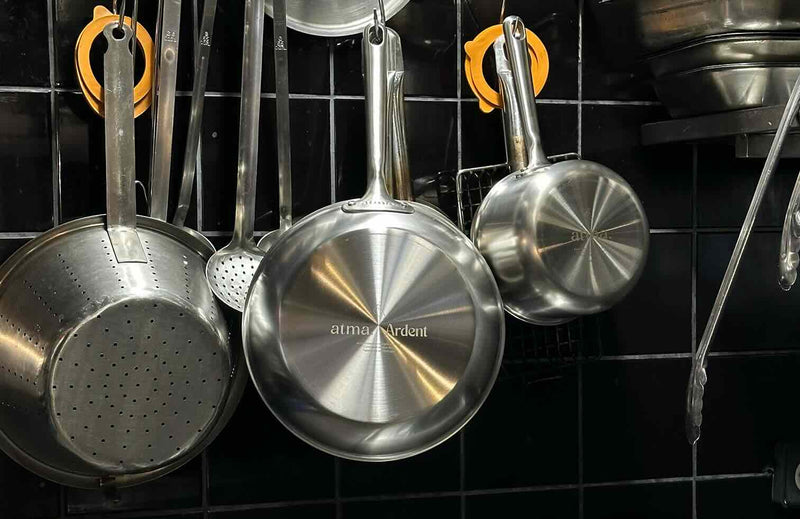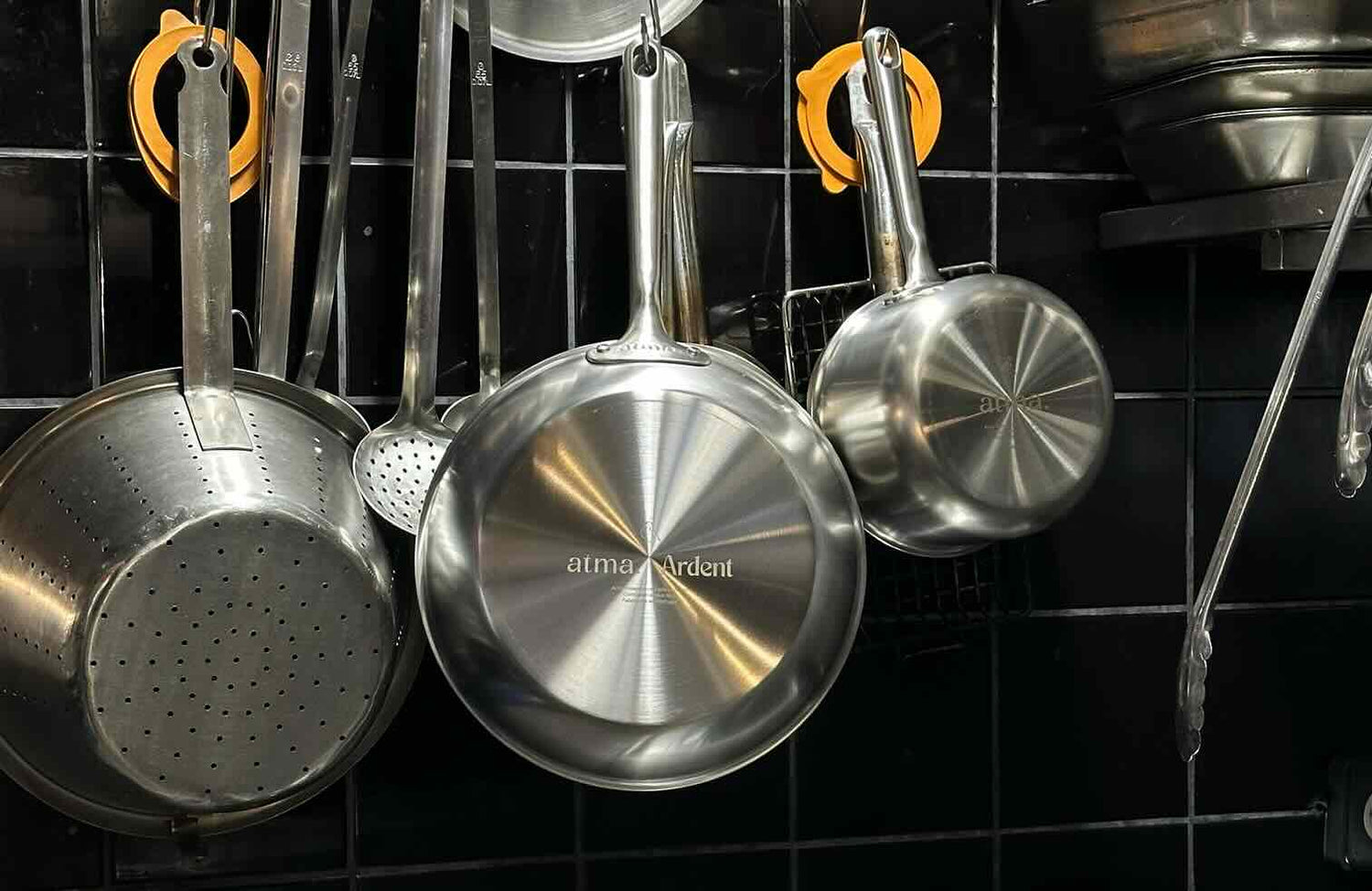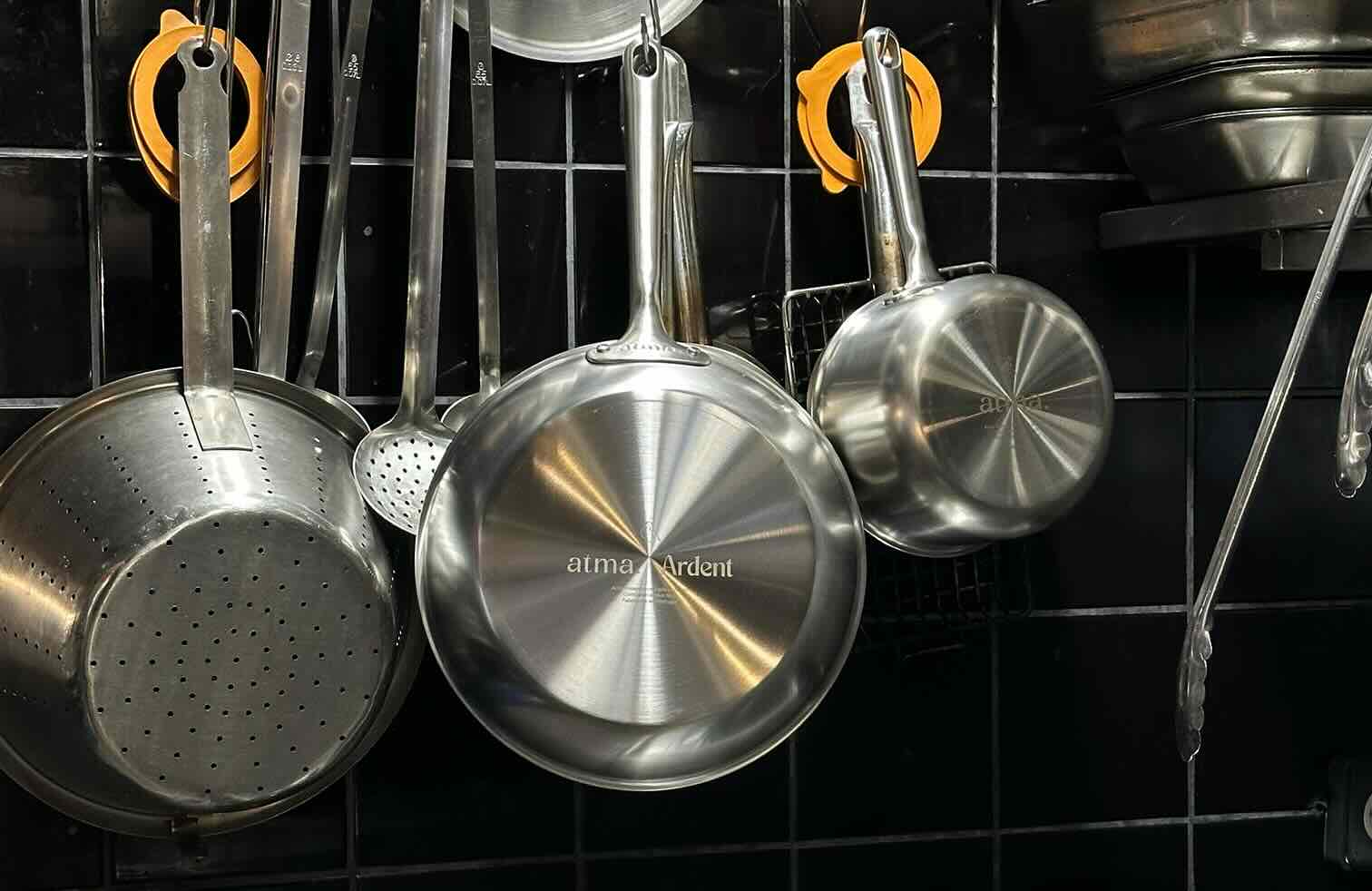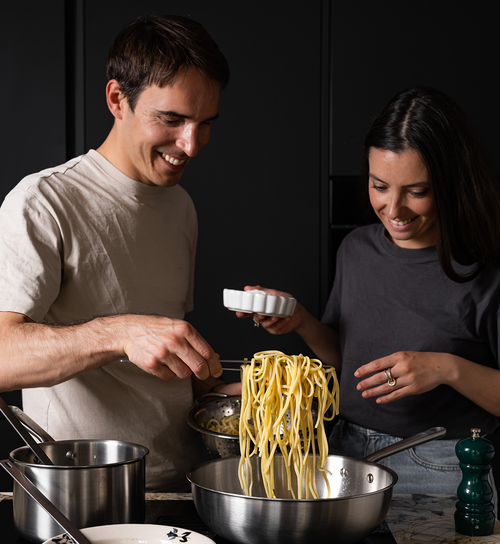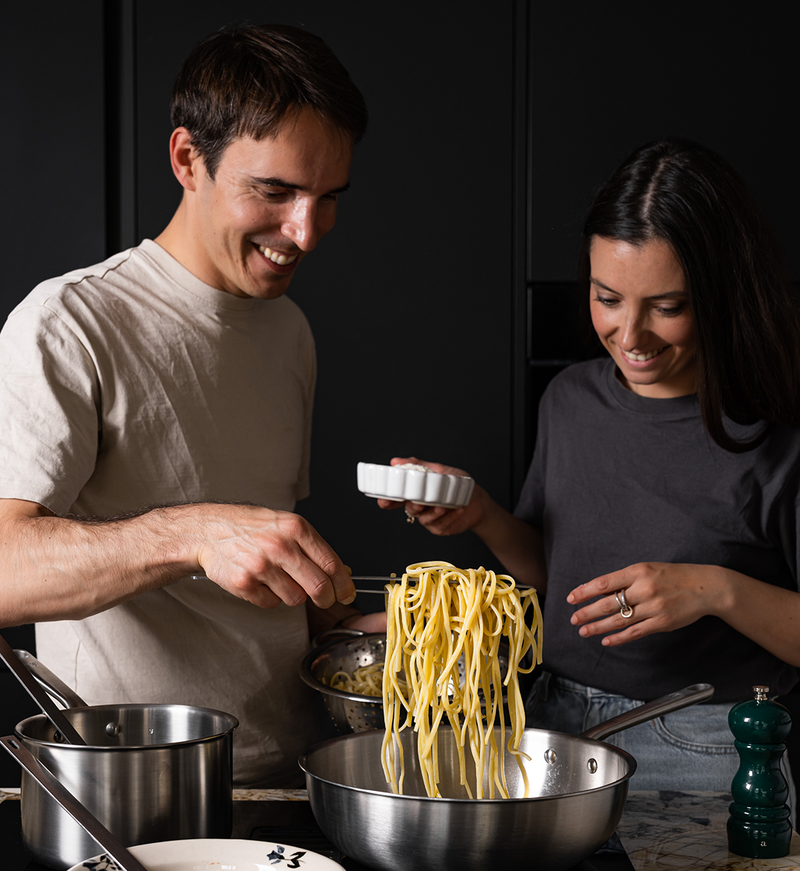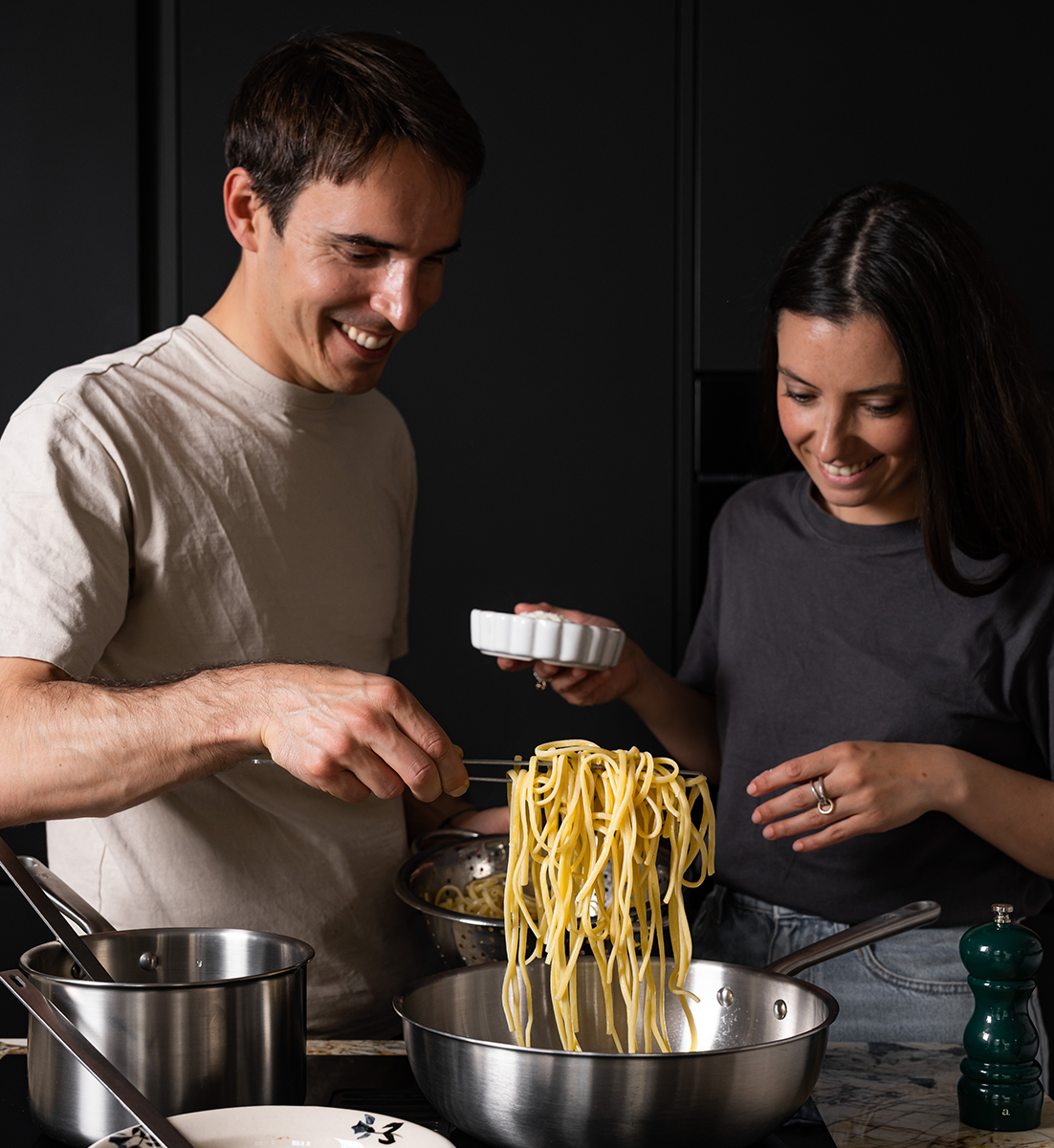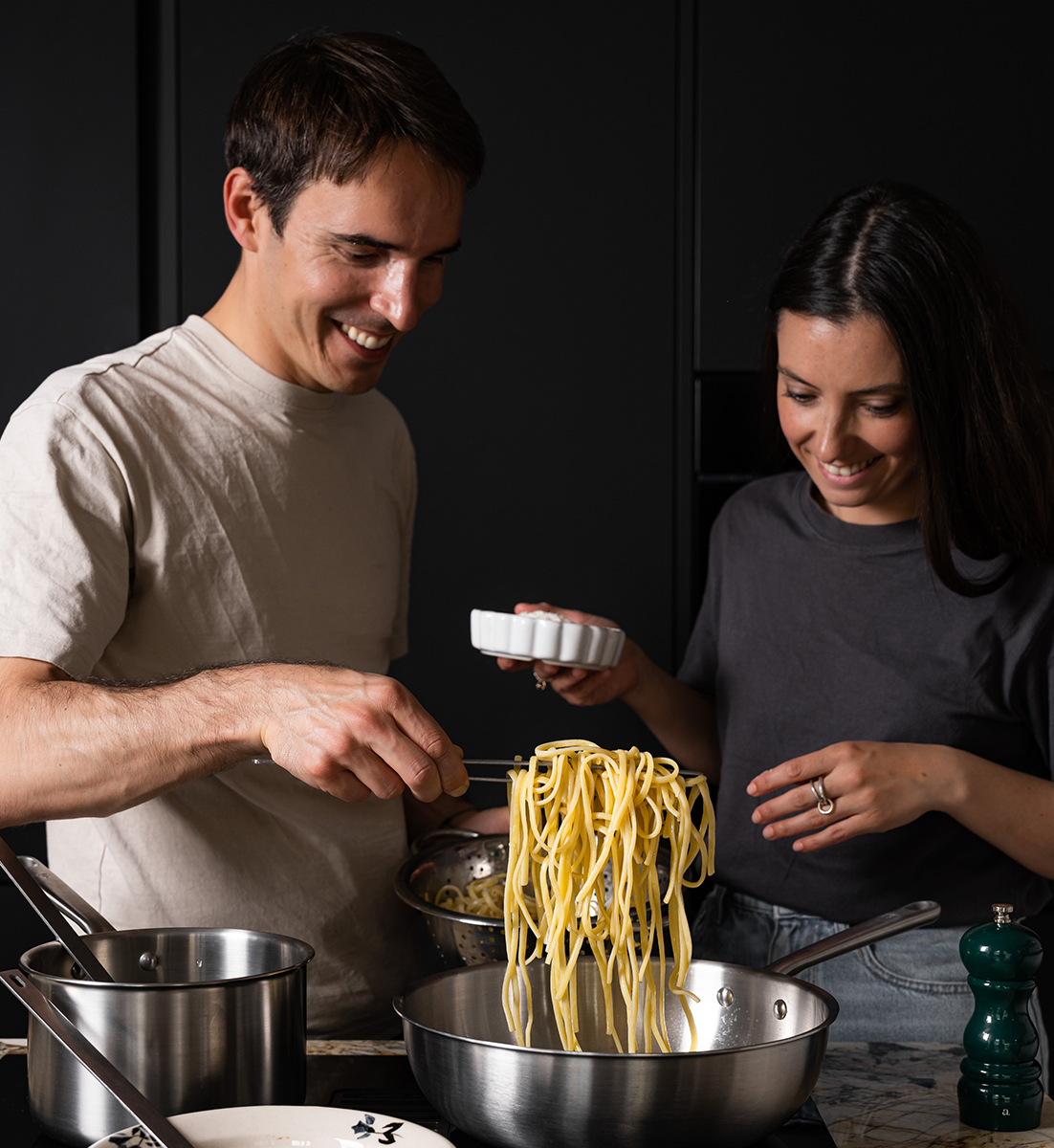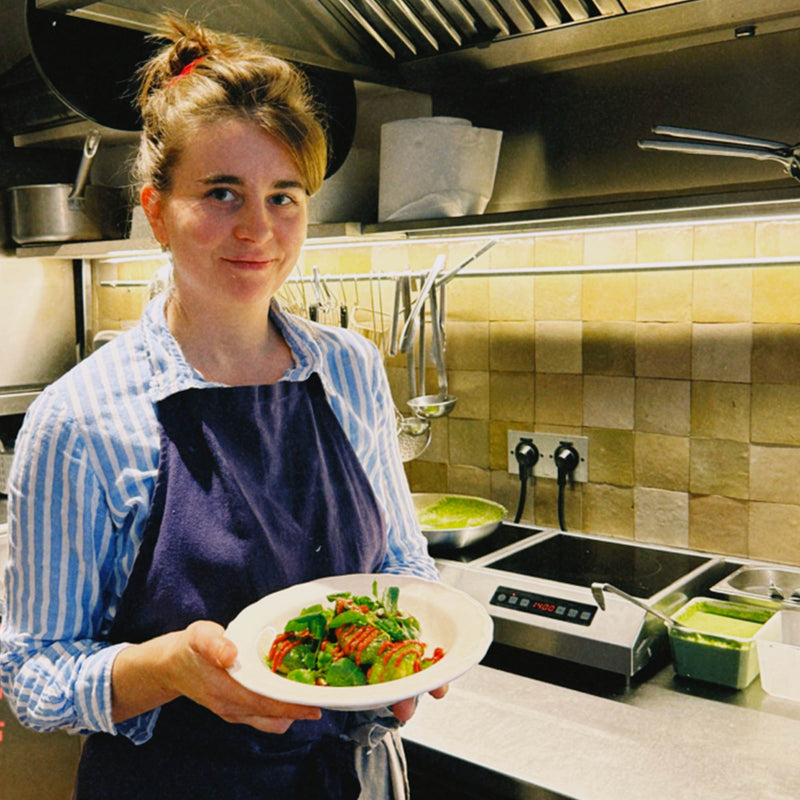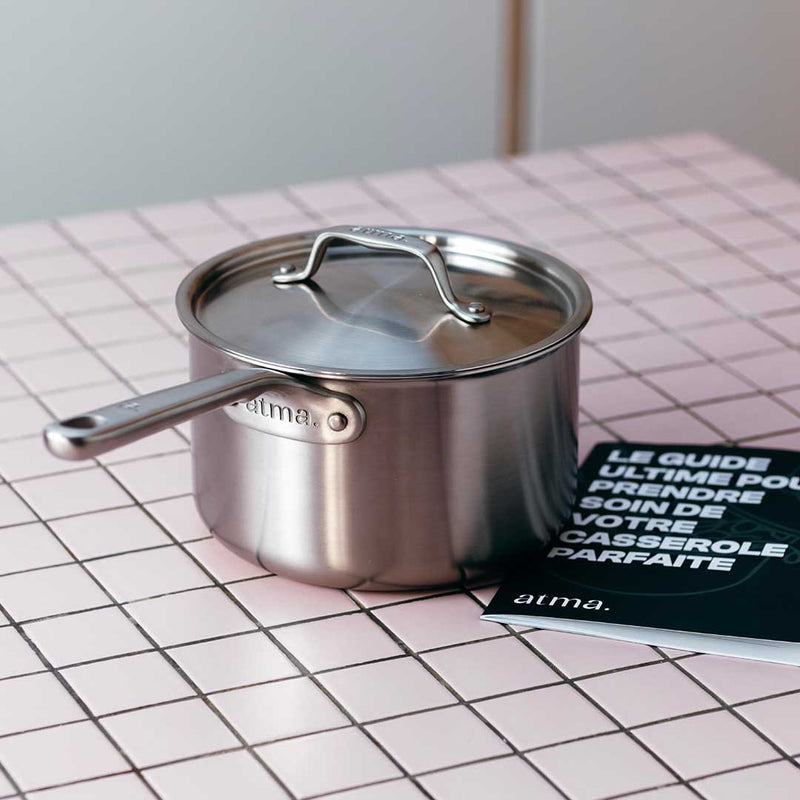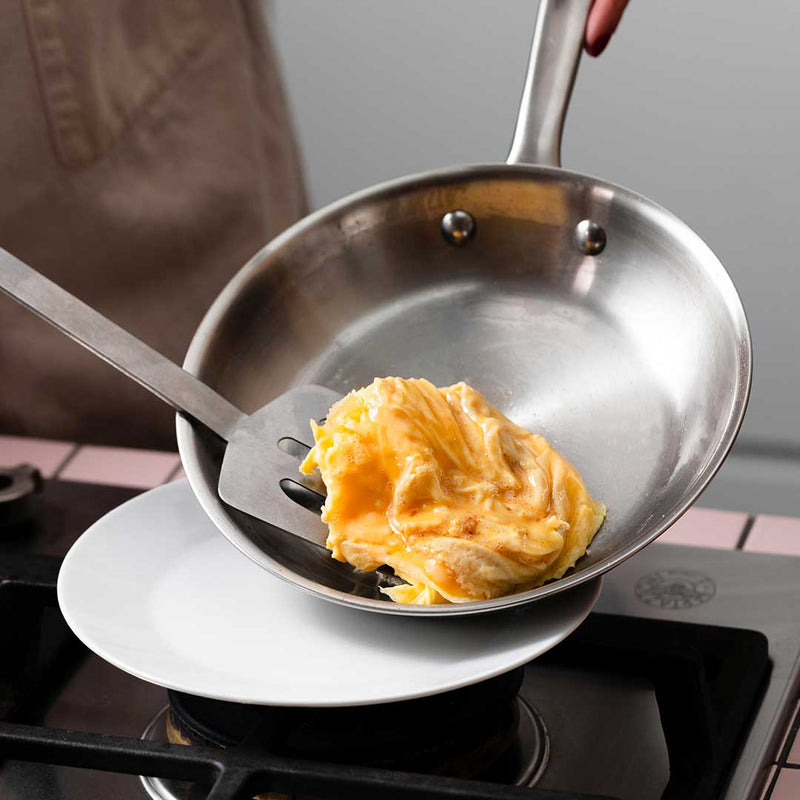A knife for every use
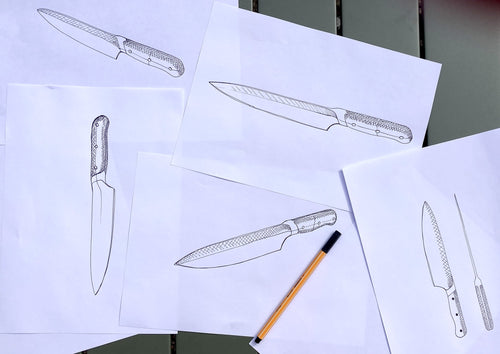
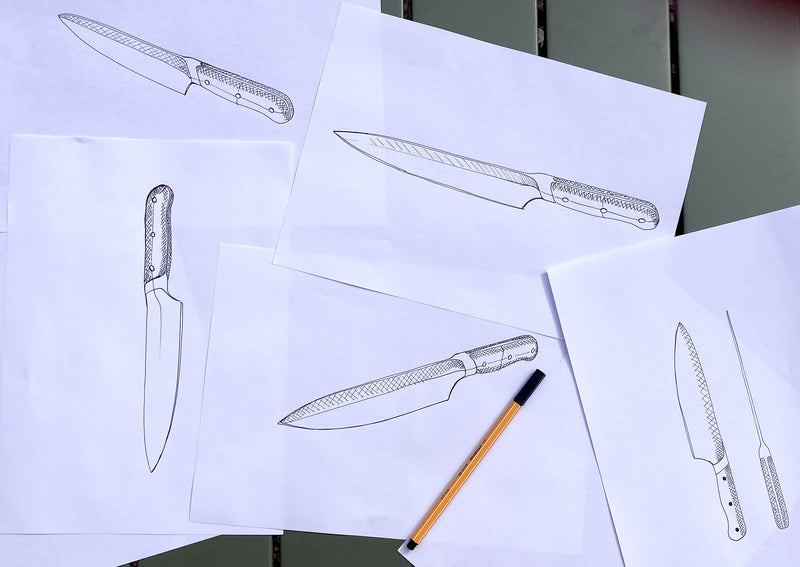
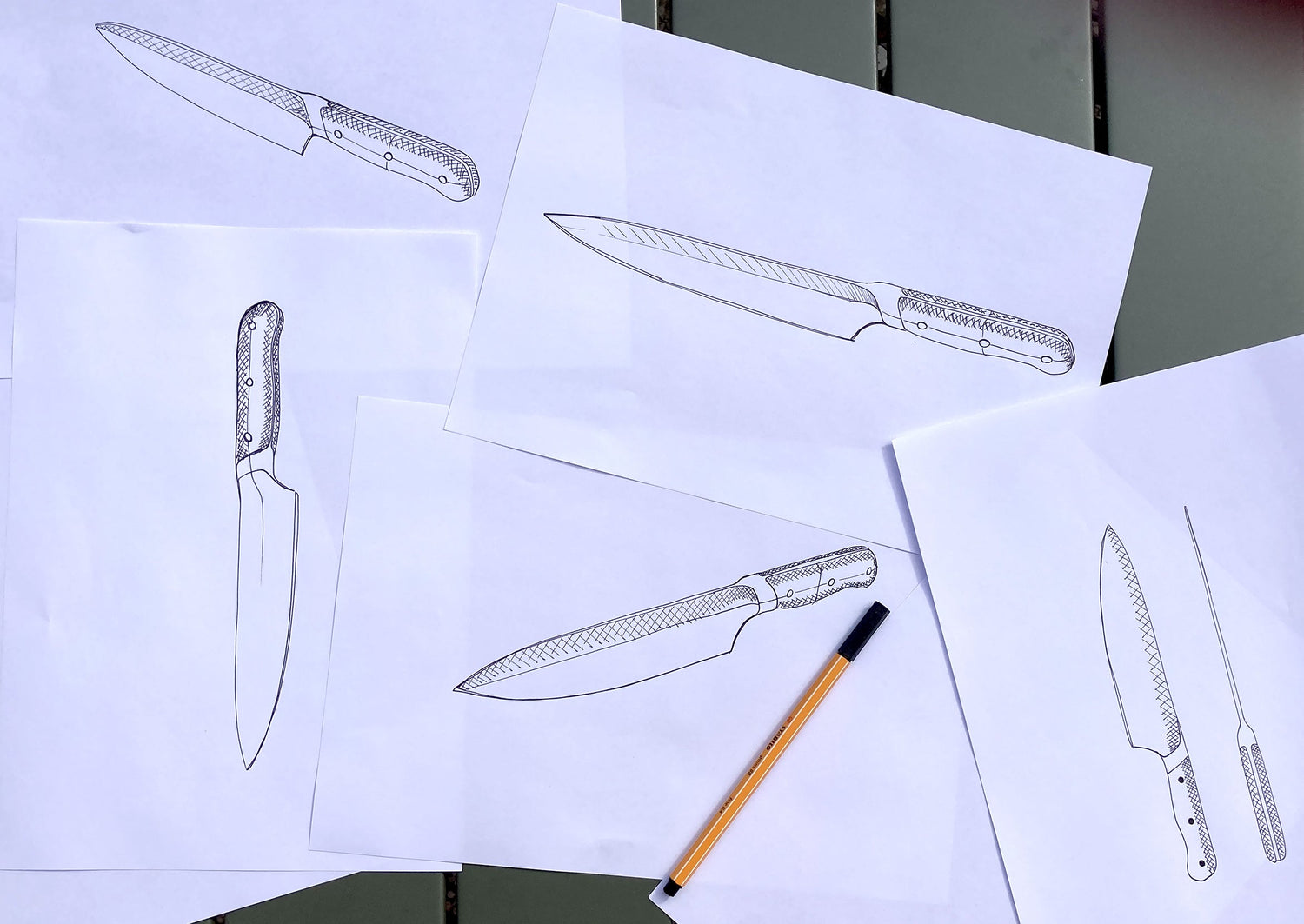
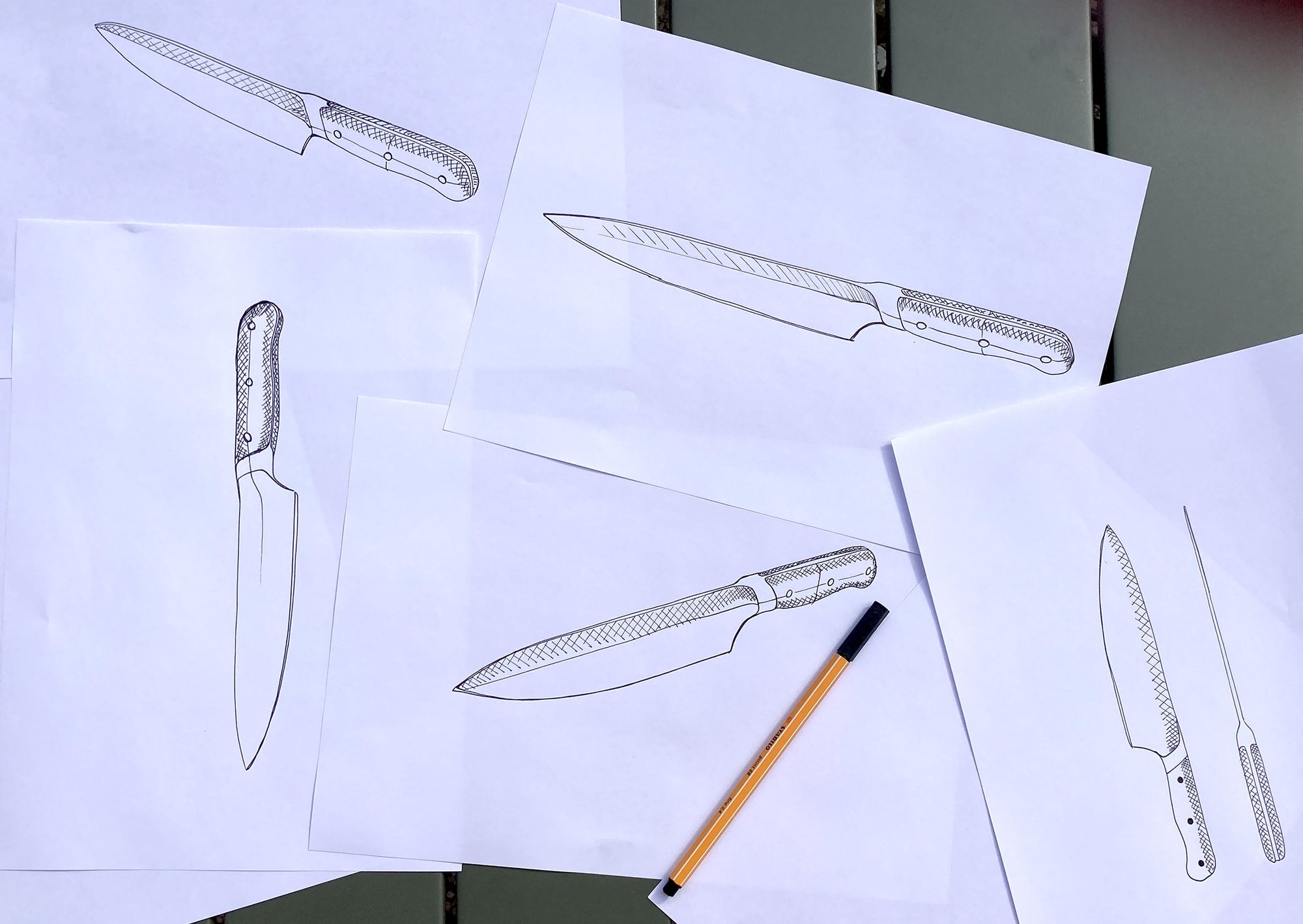




Having a set of kitchen knives is good. Knowing what each one is intended for is even better. We have written this article to help you finally use them optimally.
Just walk into a kitchenware store or cutlery shop to see that there are an almost infinite number of different types of knives!
To help you see things more clearly, we've listed the main kitchen knives here, detailing their shape and specific uses.
The chef's knife
It’s not just the big knife of the villain in the movies. It is above all the most versatile knife, it can be used 7 days a week or occasionally for all preparation cuts. It is perfectly balanced for slicing or chopping meat, fish, or cutting your fruits and vegetables. The rounded and pointed shape of its blade allows it to exert a swinging movement to easily chop and slice herbs. It is the knife that does everything in your kitchen. If you had to choose just one, it would be this one. Blade lengths can vary from 15 to 30 cm, but are most often between 18 and 20 cm.

The paring knife
You're probably familiar with this one; it's a small, versatile knife with a thin, pointed blade, very useful for more detailed cuts that require precision and control, especially for onions, garlic, and herbs. It's also very useful for preparing vegetables, such as peeling and chopping. The blade rarely exceeds 10 cm and is most often around 8 cm.

The Bread Knife
Don't underestimate it. Thanks to its micro-serrated blade, the bread knife can cut through any crust without leaving crumbs everywhere and without crushing the bread. The blade length is generally between 18 and 20 cm.

The Santoku
The Santoku is a traditional Japanese knife whose name means "The Three Virtues." Its qualities are similar to those of a chef's knife, and it offers the same versatility in its uses. The shape of its blade, tall and flat on the edge, favors an up-and-down movement, ideal for chopping and slicing. The blade size is generally between 15 and 18cm.

The slicing knife or slicer
Its long, tapered blade is perfect for long cuts in a single pass. Ideal for precisely slicing roasts, meats, and hams (raw or cooked). It can also be used for carving poultry or filleting fish. The blade is usually between 20 and 30 cm long.

The Nakiri
Like the Santoku, the Nakiri is a Japanese knife designed for vegetables. Its wide, straight-edged blade makes cutting vegetables and fruit easier because it maximizes the surface area in contact with the vegetables. Its rectangular shape makes it easy to place cut vegetables on it before transferring them to a serving dish. The blade length is usually between 15 and 18 cm.

Discover our best sellers
By Victor Desport
















